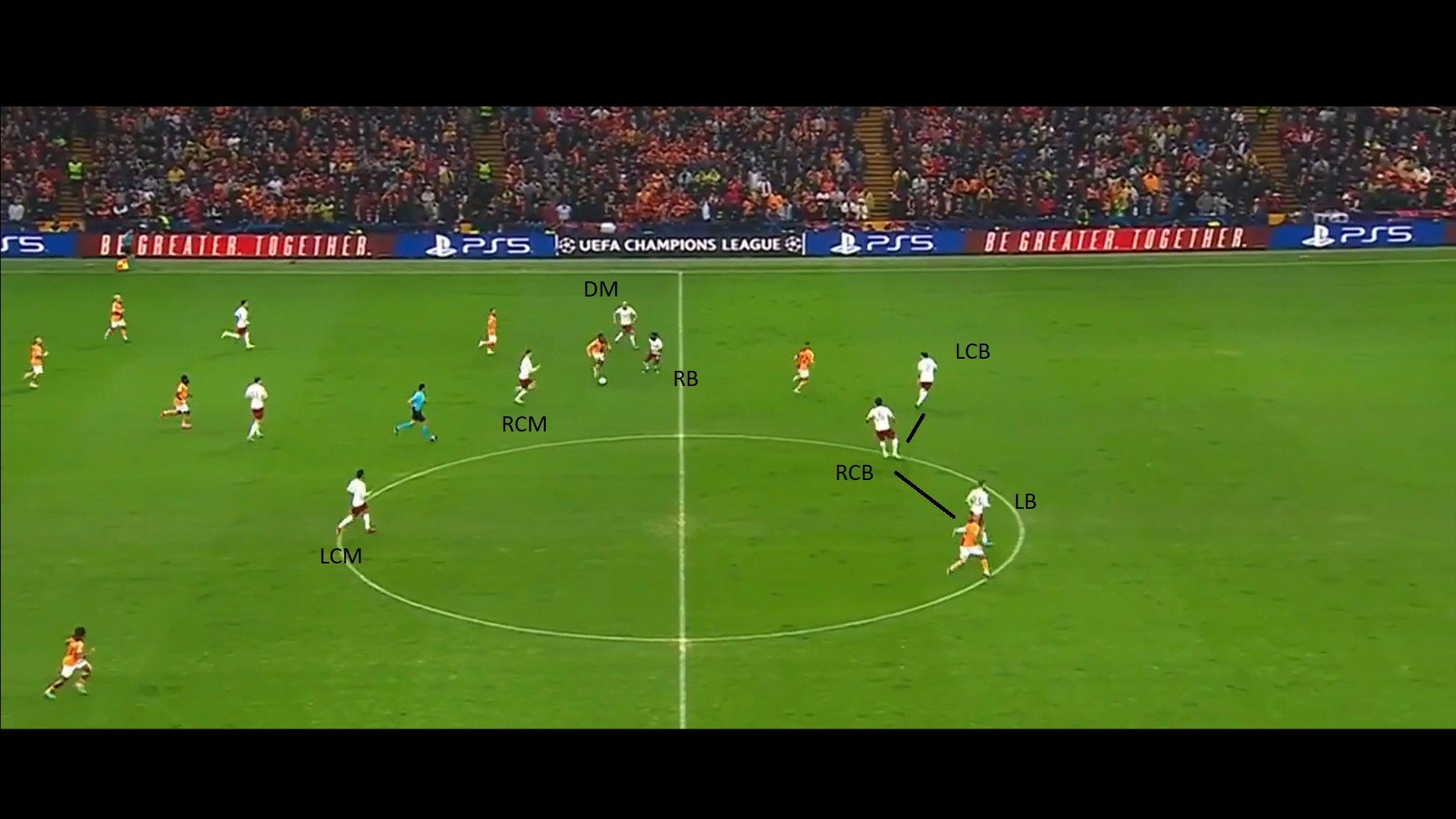In this article I’ll cover:
— The importance of rest defence
— Manchester United’s structure & issues
— Top team examples
— Potential solutions
What is rest defence?
Based on the German Restfeldsicherung, rest defence refers to the defensive structure that “rests” (remains) when a team is in the attacking phase. Basically how a team attacks knowing they can defend transitions when they lose ball
https://www.youtube.com/watch?v=Ru3KcF6OCNc
Example below. When red team attacks they leave the deeper 5 in a narrow shape that can prevent central transitions of blue team when possession is lost. This either leads to red team winning back ball or blue team being forced wide giving time for red team to drop into a block.
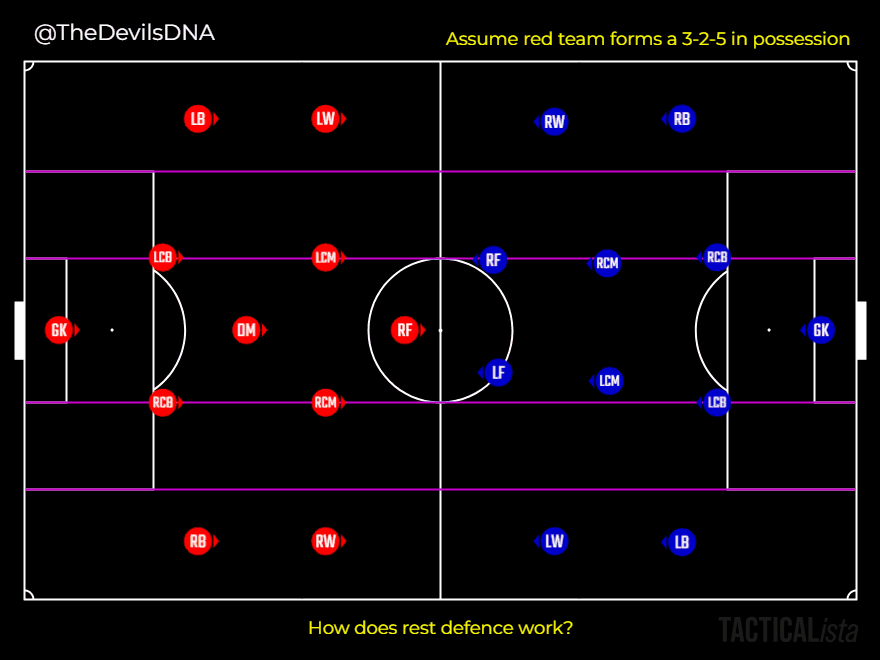
You’ll often see shapes like 3-2/2-3/3-1/2-1 mentioned for rest defence but just like build up notations these are vague. More important is shape, timing, width & height of structure. Here’s an episode of me & 2 experts talking rest defence with examples: https://x.com/GetFootballEU/status/1719772354803351911
Manchester United defensive stats ranked in EPL 23/24 (as of Jan 2024):
Shots conceded: 16th
Shots conceded distance: 12th
NPxG conceded: 16th
NPxG/Shot conceded: 15th
Shot-creating actions conceded: 16th
Our defence has been abysmal & a large reason is the poor rest defence structure.
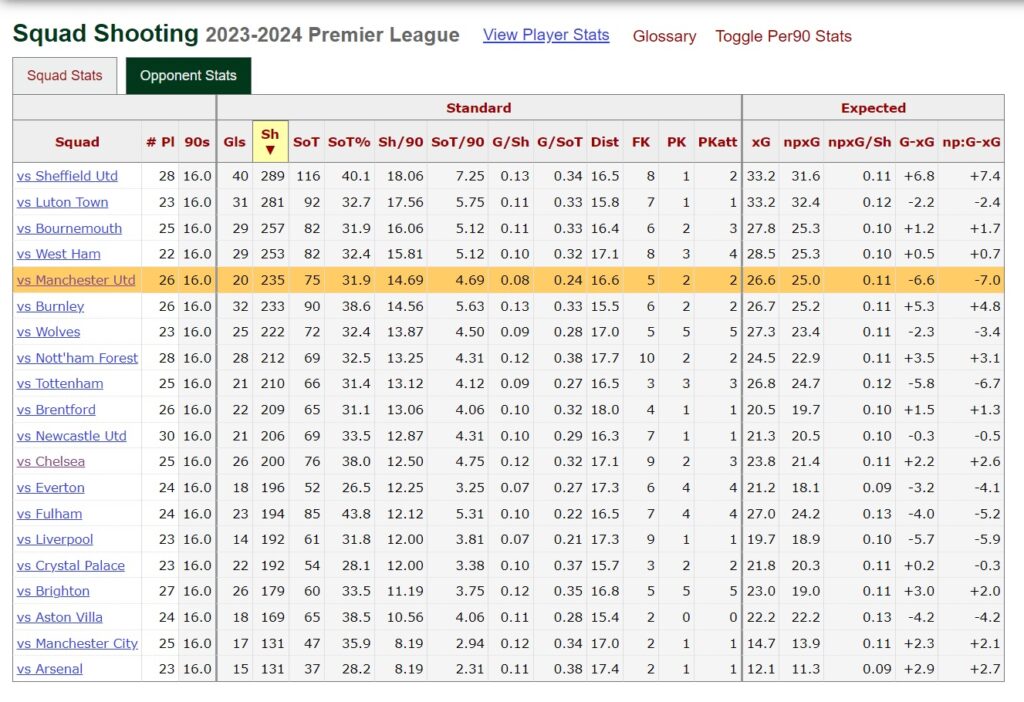
Whenever we enter the attacking phase we start to take aggressive shapes like a 3-1-6 commiting numbers forward or wide to aid progression or counter-pressing in higher areas. When the ball is lost this leads to an immediate counter in acres of space vs few players to defend.
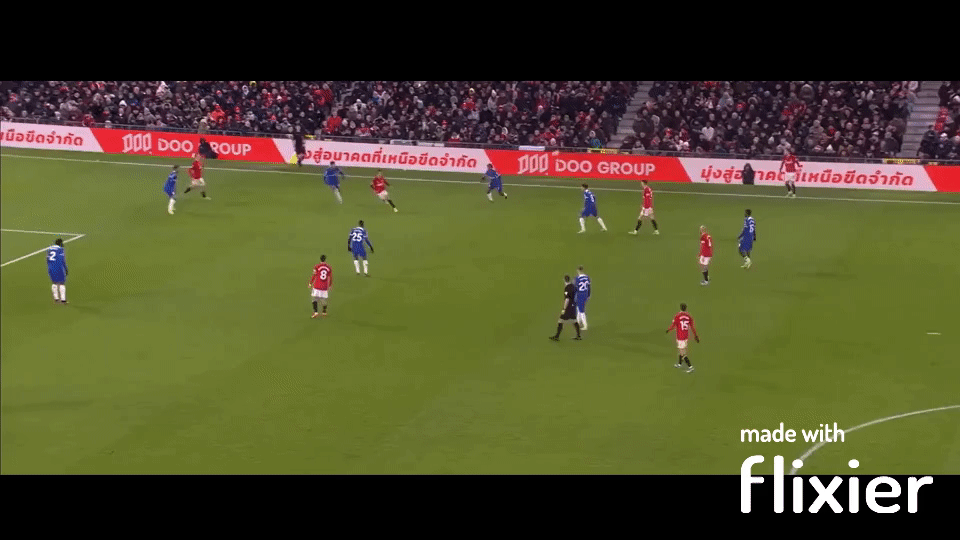
Let’s look closely at the Billing goal conceded in the 2nd half vs BOU. LB Reguilon joins the attack leaving Shaw-Maguire-Dalot in a situational back 3 in possession. Bruno & Scott mostly park high or wide to aid the attack, leaving Amrabat as lone DM ahead of the back 3.
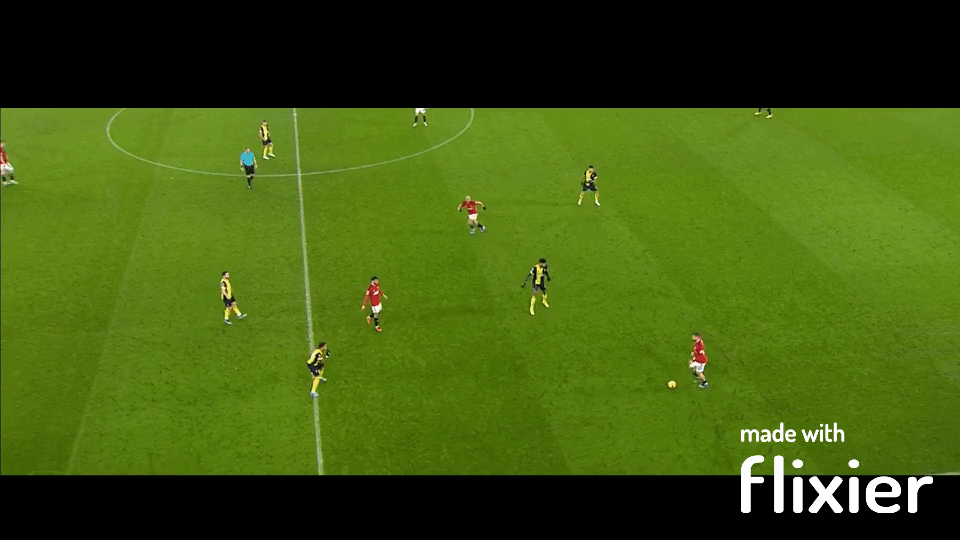
But when Bruno drifts wide & Amrabat moves into the LHS channel to recieve Shaw’s ambitious pass, the center is vacant. In the moment the ball is won, BOU have beaten all midfielders & have a run at a recovering back 3. A 3v3 which leads to switch+cross for an easy header goal.
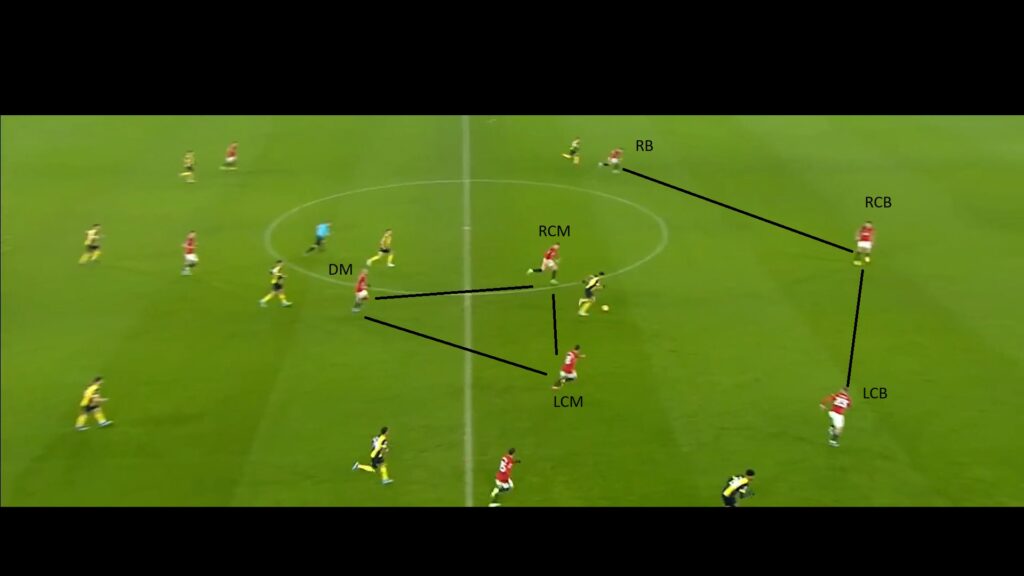
Here against Gala, we’re high in a 3-1-6. This time AWB as the RB has license to join the attack as Shaw-Maguire-Lindelof form the back 3. Amrabat is DM. In the moment we lose the ball, Amrabat charges to counter-press (instructional, Casemiro did this a lot too) vacating center.

Again Gala have a run at the space ahead of the 3 with Amrabat, CMs & AWB tryng desperately to catch up. 2 issues in the back 3: (a) They dont press to compress space when ball is lost (b) Maguire tries to step up creating a gap which is where next Gala pass is played. Bad sync
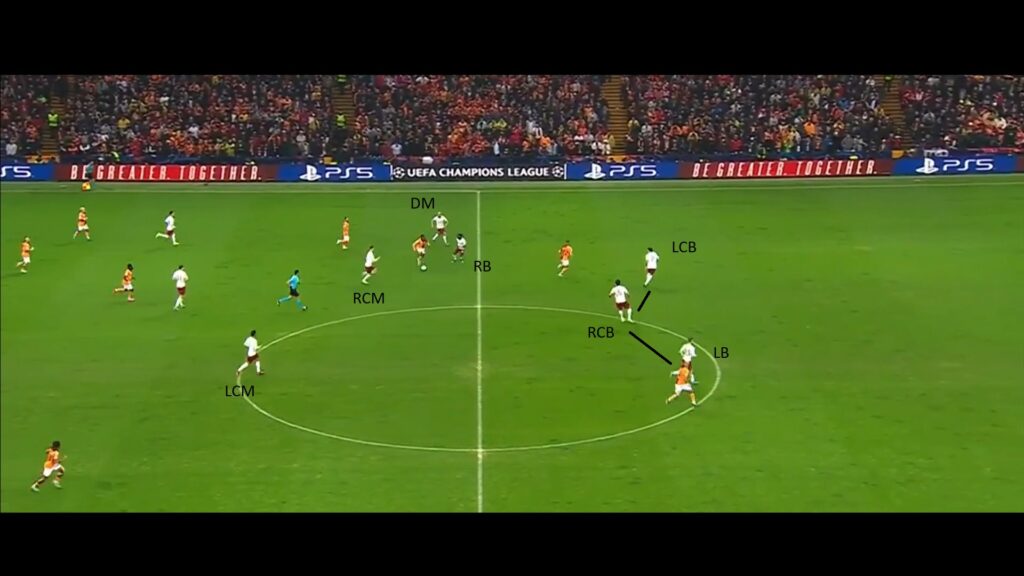
Another BOU example. This time play’s on the left side as Garnacho has dropped wide & deep to help progress while Scott has also drifted to the left to recieve from Bruno. A poor pass from Scott leads to a BOU interception & counter. The issue is Shaw having stepped up a lot.

Shaw’s step up, Reguilon’s deeper position & Maguire’s attempt to cover creates a huge space between the 3. Again, a very disjointed shape where Solanke can run & receive into. He’s goal side with space in one easy pass. Saved by the post & no United player was even close.
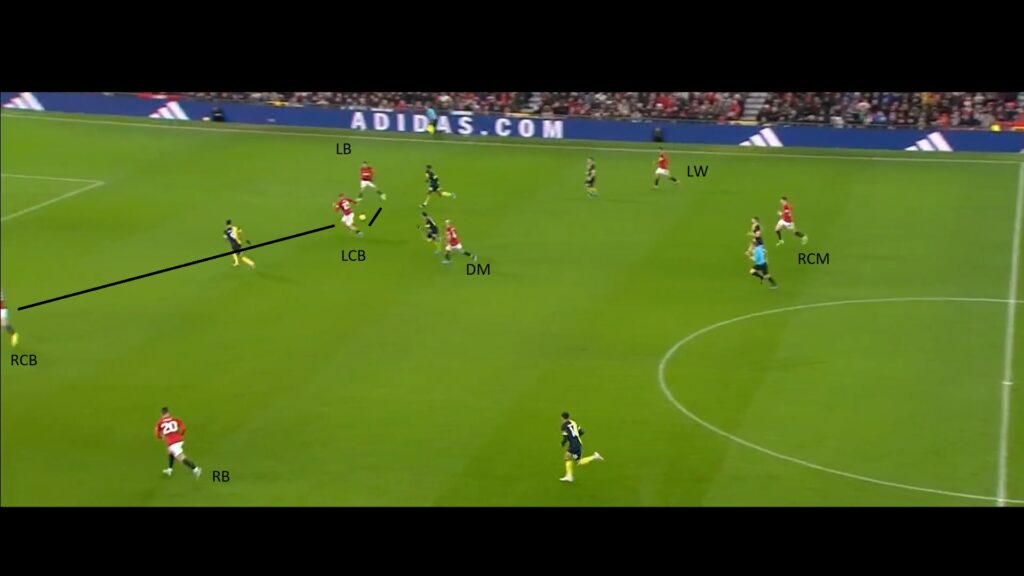
Another BOU example. The ball is lost by Garnacho very high & wide in their half. Should be easy, right? Amrabat has pushed high to the left to support the attack. He’s closer to BOU’s RB when they win the ball. The massive gap between him & back 3 is noticed & ball played there.
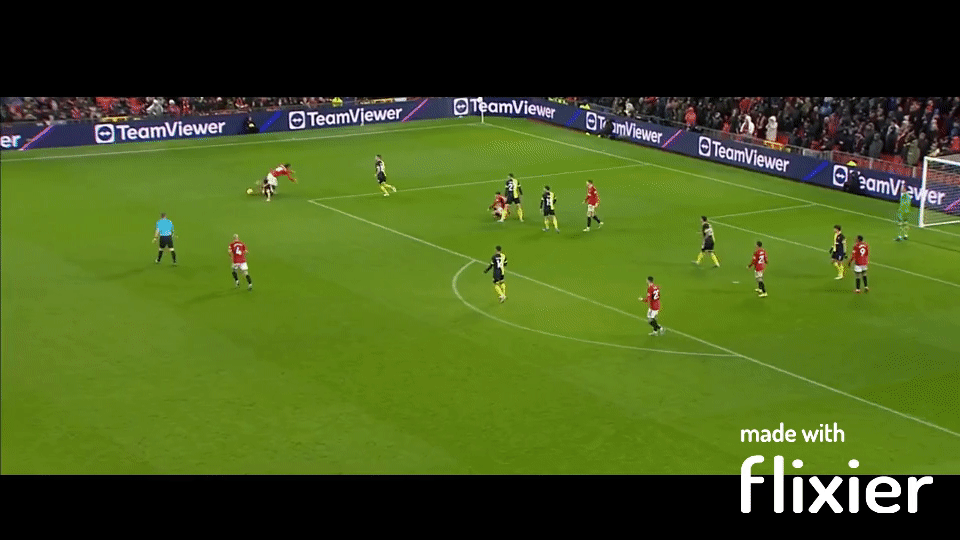
With Dalot inverted, Reguilon wide & Amrabat high, the 2 CBs are deep creating a massive gap for 3 BOU players to enter, control an aerial ball & release the pass. A 3v2 situation almost. In the end, a good Maguire tackle saves the day but another poor rest defence episode.
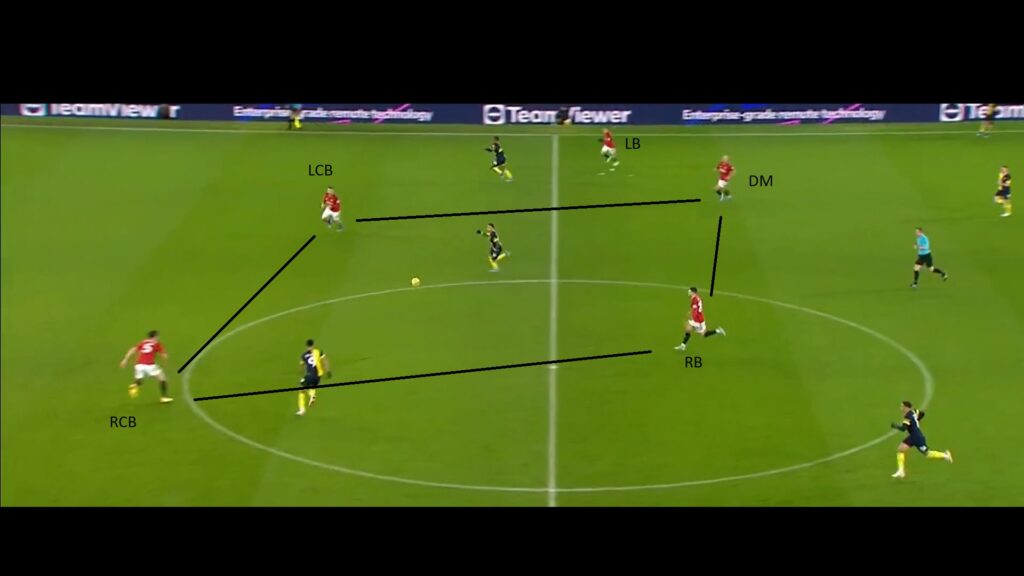
Summary of our rest defence gaps:
— High vertical gap: Deep back line + midfield drifting high/wide for progression/press
— High horizontal gap: Spread-out back 3 (again to aid wide progression)
— Smaller vertical gaps: Lack of sync/strategy between defenders to step up or cover
Opponent benchmark
Before solutions, let’s look at how our top team rivals do it. Here’s an example from Arsenal vs Spurs from this season. Odegaard loses the ball in the RHS when 5 Arsenal attackers have entered Spurs final 3rd. Spurs want to counter immediately & find Son.

RB White is narrow in possession while Saliba has drifted wide to check Son. The LCB & LB are there for cover & DM Rice is also backtracking to support. They’ve blocked the center as a unit & forced Spurs wide. Son can only pass centrally by which time Rice & others recover.
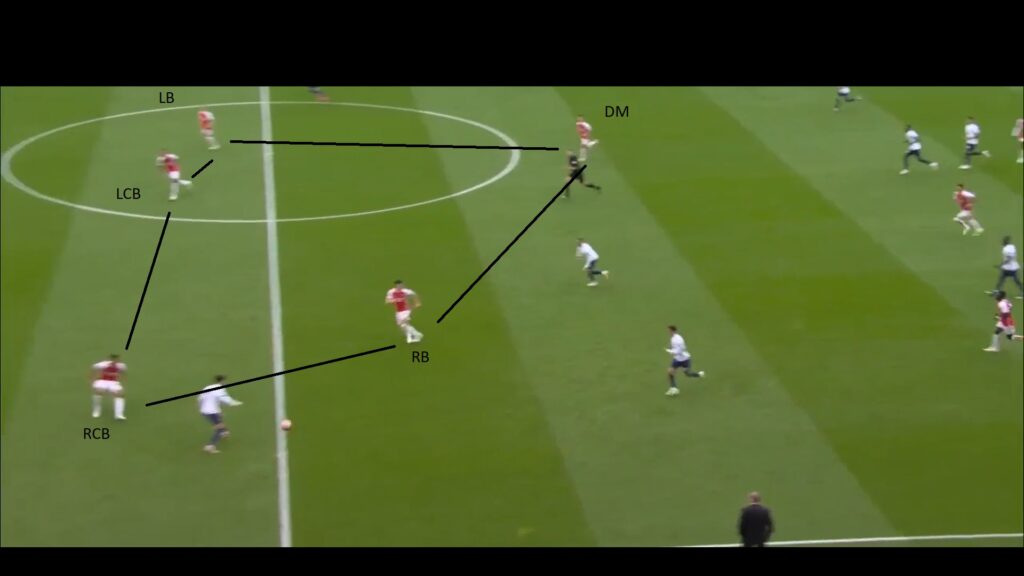
Here’s an example from City vs Liverpool this year. City have a different setup where a CB steps up into pivot. Here LCB Akanji is up with DM Rodri when City have the ball. When ball is lost, they congest the center forcing Liverpool wide. RCB Dias engages Nunez wide on flank.
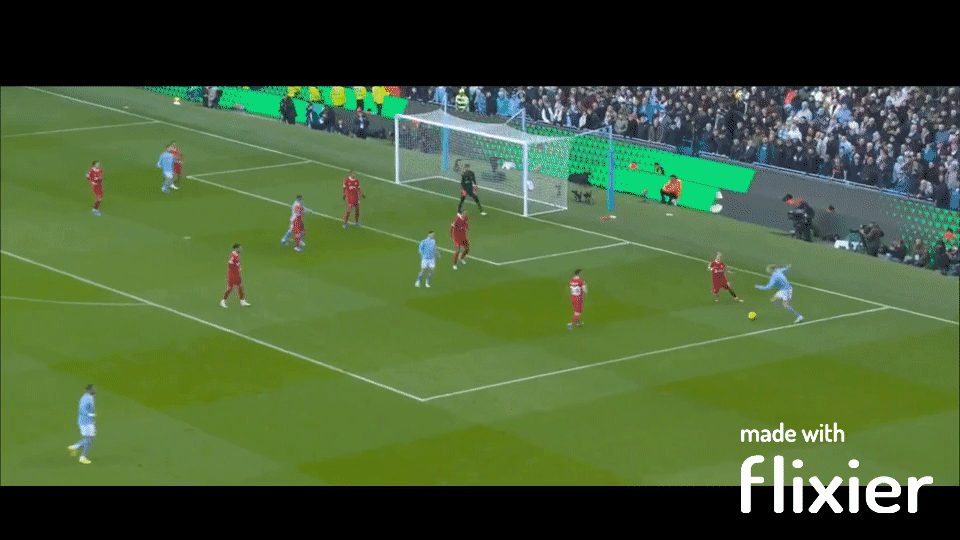
RB Walker ideally forms the back 3 but seeing Dias step wide he charges to dissuade Nunez at first before taking up a central position to cover for Dias. By the time Nunez is forced back, Rodri & Akanji have recovered, Walker cover enables Dias to press & win ball as Nunez delays
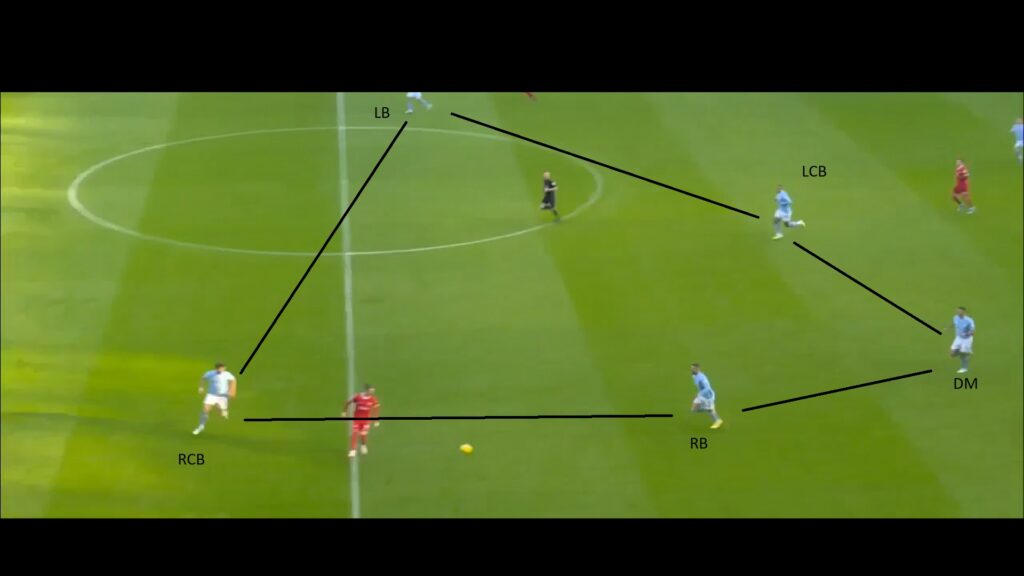
Were ten Hag’s Ajax better in this regard?
Not quite. It happened lesser coz of league quality & Ajax having better in-possession controllers. But the principles were largely the same. To support an aggressive 3-1-6 even the lone DM would press high when possession was lost.
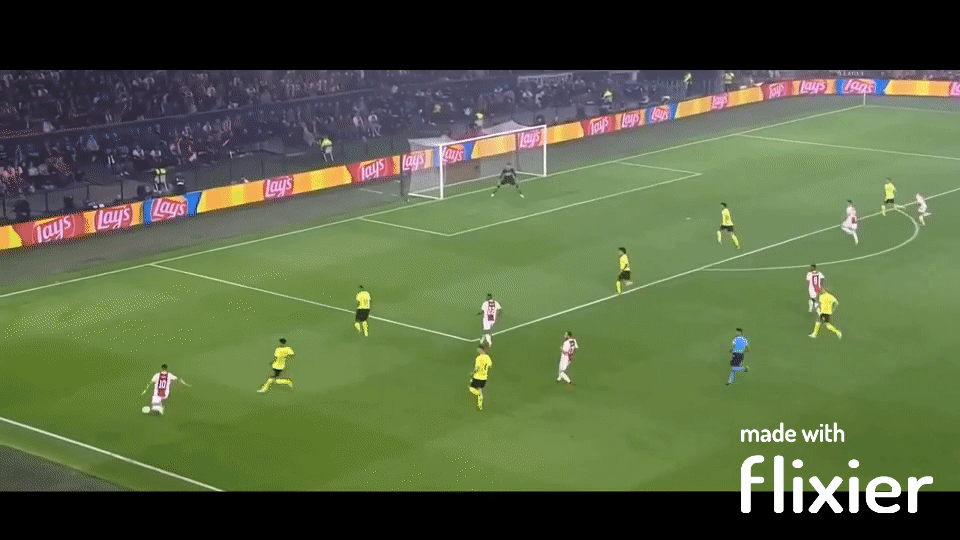
Here DM Edson pressing high to support the front 5 (which has both CMs) means that the 2 CBs are backtracking alone in acrres of space with the RB closest to helping out. A 3v3 situation that is thwarted in the end by a last ditch Lisandro tackle. Very similar to us currently.
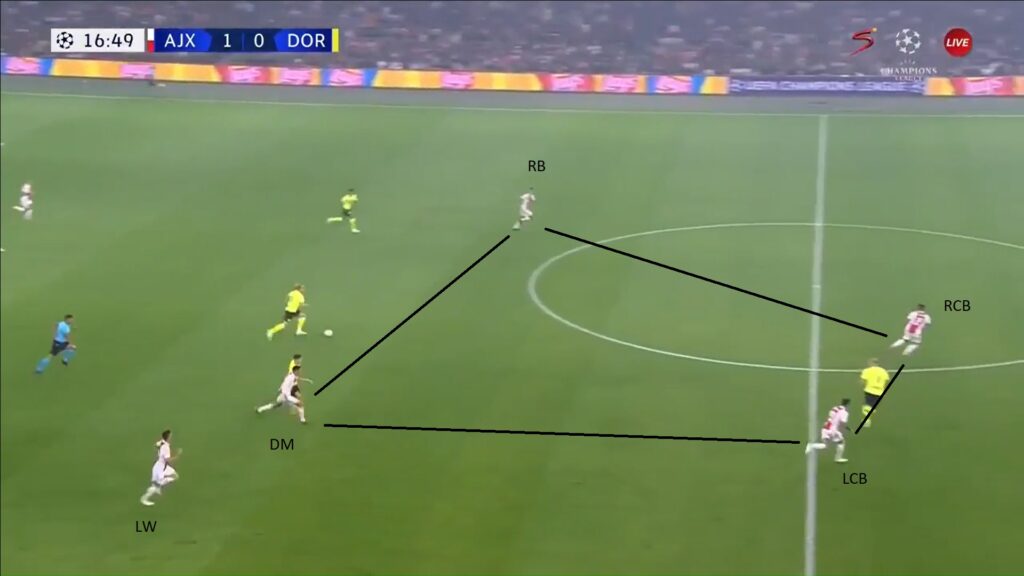
Solutions to improve
Structural:
1. Better timing of rotations: Eg. If DM goes to LW to help, RCM drops deep
2. Playing a synced-up higher line: Push up line & step up together to compress space or catch offside
3. Prioritize center: Delay opponent by forcing wide
Good example:
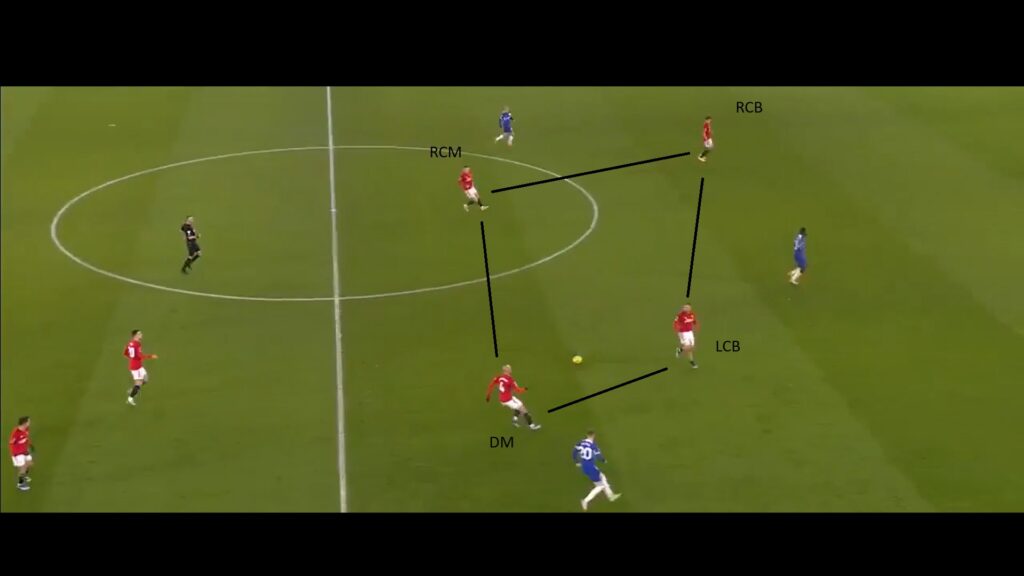
Recruitment:
1. Buy defenders who can defend channels: In above examples, what Saliba & Dias offered vs Son & Nunez enables a high + aggressive rest defence
2. Buy space-covering midfielders: Casemiro coverage papered cracks last year. 1-2 similar young profiles for OOP needed
And one last thing. I think 3 big differences from the 22/23 season were:
1. Casemiro was in good form papering the cracks
2. Defence line was lower and in good box defending form
3. We didn’t press so high to leave space in midfield when midfielders backed the press
Thank you for reading. Follow me on Twitter if you don’t already. Feedback and engagement there is appreciated!

